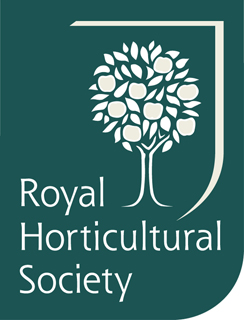 I caught up on some reading and learning whilst we endured the sub zero temperatures of late November and December (well, November at least! Ed.). It’s a grand opportunity to use the time when I cannot be outside (or more honestly don’t want to be!) to wade through the piles of magazines that come with the territory and RHS membership and which pile up over the months that I am too busy to read them.
I caught up on some reading and learning whilst we endured the sub zero temperatures of late November and December (well, November at least! Ed.). It’s a grand opportunity to use the time when I cannot be outside (or more honestly don’t want to be!) to wade through the piles of magazines that come with the territory and RHS membership and which pile up over the months that I am too busy to read them.
If you really are a keen gardener then RHS membership is worth considering. It’s open to anyone and brings a monthly magazine which I think rivals any of the publications on the general market.
And so, with due acknowledgement to RHS ‘The Garden’ (the last six months copies), the Saturday Telegraph garden supplement (which comes in my stack of newspapers for collecting chicken poo from my Mum) and the CLA magazine (which I am assured is not only for posh people as I always thought) I have selected some items of news for your January reading that I found interesting.
I have discovered the new apple ‘Redlove’. I had been doing some research on Cornish apple trees for a customer and came across this new breed that has apparently taken 20 years to breed in Switzerland and is a bright red apple with red flesh, very juicy and full flavoured apparently. Its red flesh has a white heart pattern inside and it is claimed to be high in antioxidants and doesn’t go brown when cooked or just cut open. It’s on a dwarf rootstock so could be grown in a pot, is disease resistant and has a rare deep pink blossom. Sounds almost too good to be true and it is a new introduction and so currently is quite expensive. As with all new things I would hang on for the breeders to produce more, to bring the price down and for testing on the appetising claims. That also reminds me of a friend who paid £7,000 for a small Wollemi pine, the one discovered in New Zealand that they thought was extinct, and five years or so later I am able to sell them for £40…..!
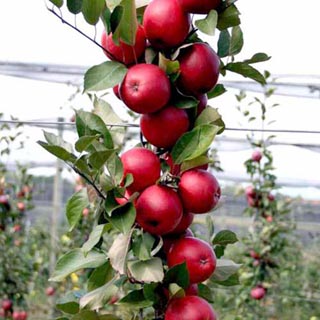 Also this week I discovered a lovely line of elm trees in a customer’s garden. I thought all the elms had pretty much disappeared particularly where they were in larger colonies, leaving only a few individuals around but these are very healthy. In the same week I read that elms could return to the streets of London under a new project called Ulmus Londinium. The aim is to plant an elm in every road that has the word elm in its title. It will also map every surviving elm tree in London thus giving a full picture of the survivors of the Dutch elm disease which struck in the 1970s. This disease was a fungus ophiostoma novo-ulmi which was spread by the elm bark beetle but two specific elm species seemed to survive it and it is these two varieties Ulmus Sapporo ‘Autumn Gold’ and Ulmus Americana ‘Princeton’ of which 1,000 will be planted.
Also this week I discovered a lovely line of elm trees in a customer’s garden. I thought all the elms had pretty much disappeared particularly where they were in larger colonies, leaving only a few individuals around but these are very healthy. In the same week I read that elms could return to the streets of London under a new project called Ulmus Londinium. The aim is to plant an elm in every road that has the word elm in its title. It will also map every surviving elm tree in London thus giving a full picture of the survivors of the Dutch elm disease which struck in the 1970s. This disease was a fungus ophiostoma novo-ulmi which was spread by the elm bark beetle but two specific elm species seemed to survive it and it is these two varieties Ulmus Sapporo ‘Autumn Gold’ and Ulmus Americana ‘Princeton’ of which 1,000 will be planted.
There is also a national campaign being launched to plant one million trees over the life time of the new parliament. The RHS, Woodland Trust, Forestry Commission and Defra are coordinating a giveaway of packs of native trees to local community groups. The point here is that trees offer a range of benefits, particularly in urban areas from storing carbon to stabilising soil, creating wildlife habitats, providing shade and shelter and of course wood.
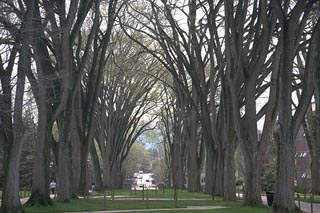 Now we have all heard of sudden oak death and it seems not many plants will ultimately be immune. Larch plantations are succumbing quickly, 58 plantations in England and Wales are affected and many of the larches at Idless have been removed together with other conifers. Until 2009 the disease was confined mainly to rhododendrons but about 130 species of plant have now been found to be infected including many but not all of the oaks (but including holm oaks of which we grow many in Cornwall), beech, horse and sweet chestnut, sycamore, viburnum, camellia, magnolia and many of the conifer species. It is prevalent in the west and south west and concerned owners should look for wilting on leaves during the growing period and resinous bleeds in branches and trunks. The only way to stop the spread is to fell but there is no evidence that the sawn timber cannot be used or affects the spread.
Now we have all heard of sudden oak death and it seems not many plants will ultimately be immune. Larch plantations are succumbing quickly, 58 plantations in England and Wales are affected and many of the larches at Idless have been removed together with other conifers. Until 2009 the disease was confined mainly to rhododendrons but about 130 species of plant have now been found to be infected including many but not all of the oaks (but including holm oaks of which we grow many in Cornwall), beech, horse and sweet chestnut, sycamore, viburnum, camellia, magnolia and many of the conifer species. It is prevalent in the west and south west and concerned owners should look for wilting on leaves during the growing period and resinous bleeds in branches and trunks. The only way to stop the spread is to fell but there is no evidence that the sawn timber cannot be used or affects the spread.
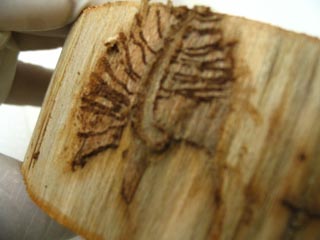 Also in our area, Natural England has found 10 new colonies of a rare moss species. Leptodontium gemmascens lives mainly on thatched roofs. The National Trust is asking thatch owners to look at their roofs and identify the moss from their web site and inform them so a full picture of its habitats can be made.
Also in our area, Natural England has found 10 new colonies of a rare moss species. Leptodontium gemmascens lives mainly on thatched roofs. The National Trust is asking thatch owners to look at their roofs and identify the moss from their web site and inform them so a full picture of its habitats can be made.
Fuchsia gall mite was first detected in Britain in 2007 and this was only when a concerned gardener sent a fuchsia to the RHS to identify its problem (this service is invaluable and open to RHS members). The gall is a microscopic mite that feeds on the plant’s shoot tips and flower buds and causes severely distorted growth. Fuchsias, of course, have died back now but check those cosseted in greenhouses. We know the gall mite has got to Devon and it needs to be kept away from us. The only prevention is to burn infected plants.
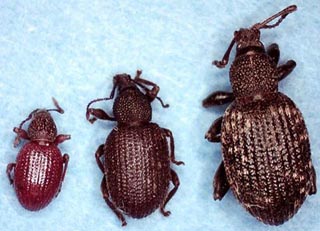 Another strange bit of news I picked up, an Argentinean botanist has found a fossilised daisy. Fossilised pollen grains and seeds are not uncommon but a full daisy flower completely fossilised is said to prove that daisies existed 47.5 million years ago in the mid Eocene epoch when modern mammals and plants were becoming more widespread. The daisy had a large flower head several centimetres across.
Another strange bit of news I picked up, an Argentinean botanist has found a fossilised daisy. Fossilised pollen grains and seeds are not uncommon but a full daisy flower completely fossilised is said to prove that daisies existed 47.5 million years ago in the mid Eocene epoch when modern mammals and plants were becoming more widespread. The daisy had a large flower head several centimetres across.
The daylight hours are increasing at last although I never feel comfortable until I have seen what February has to offer. At least I know spring may be somewhere around the corner. A happy and prosperous New Year to all!
